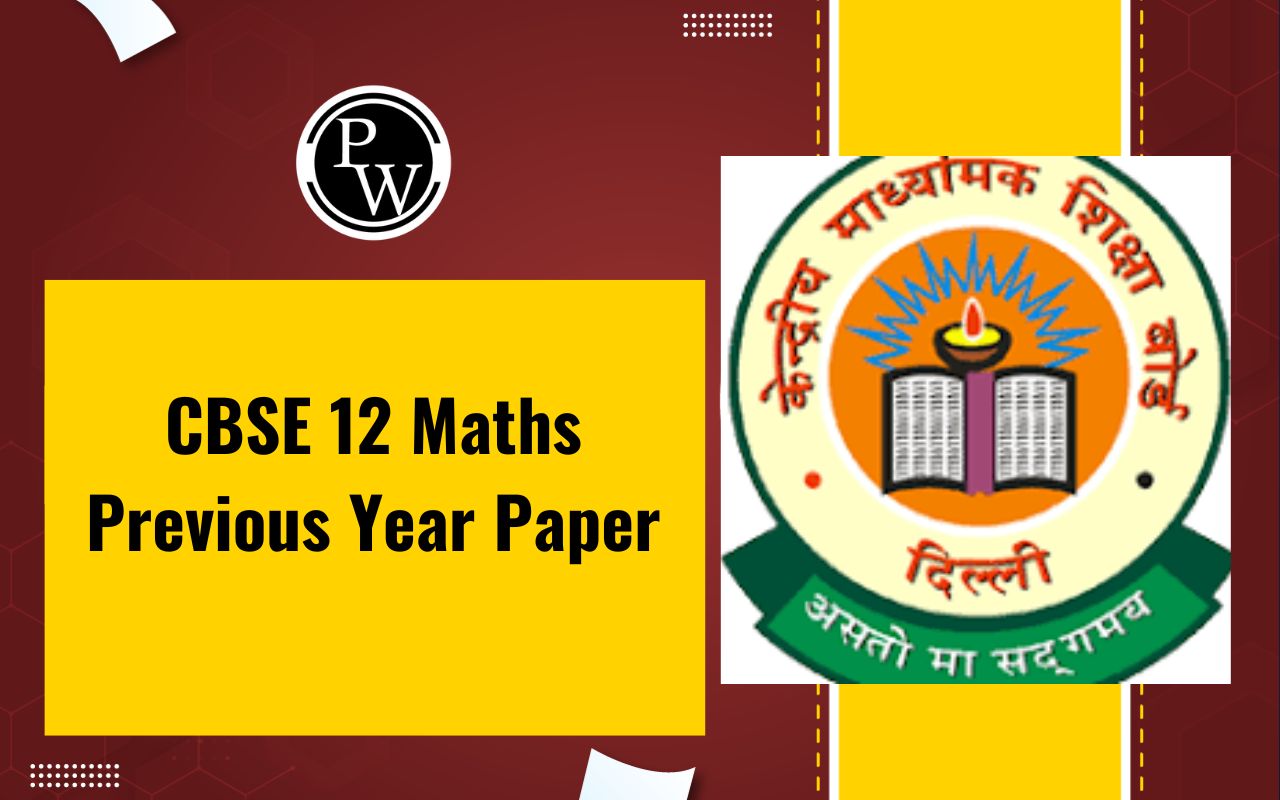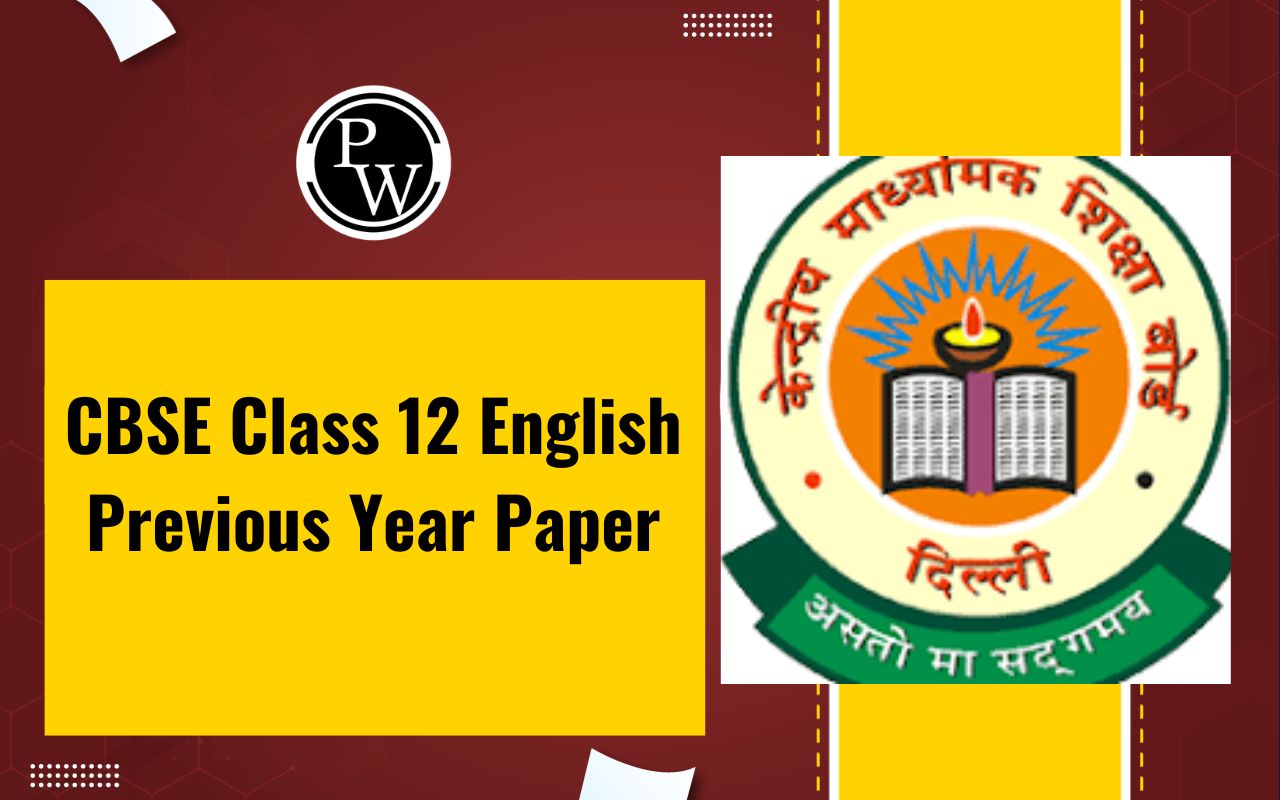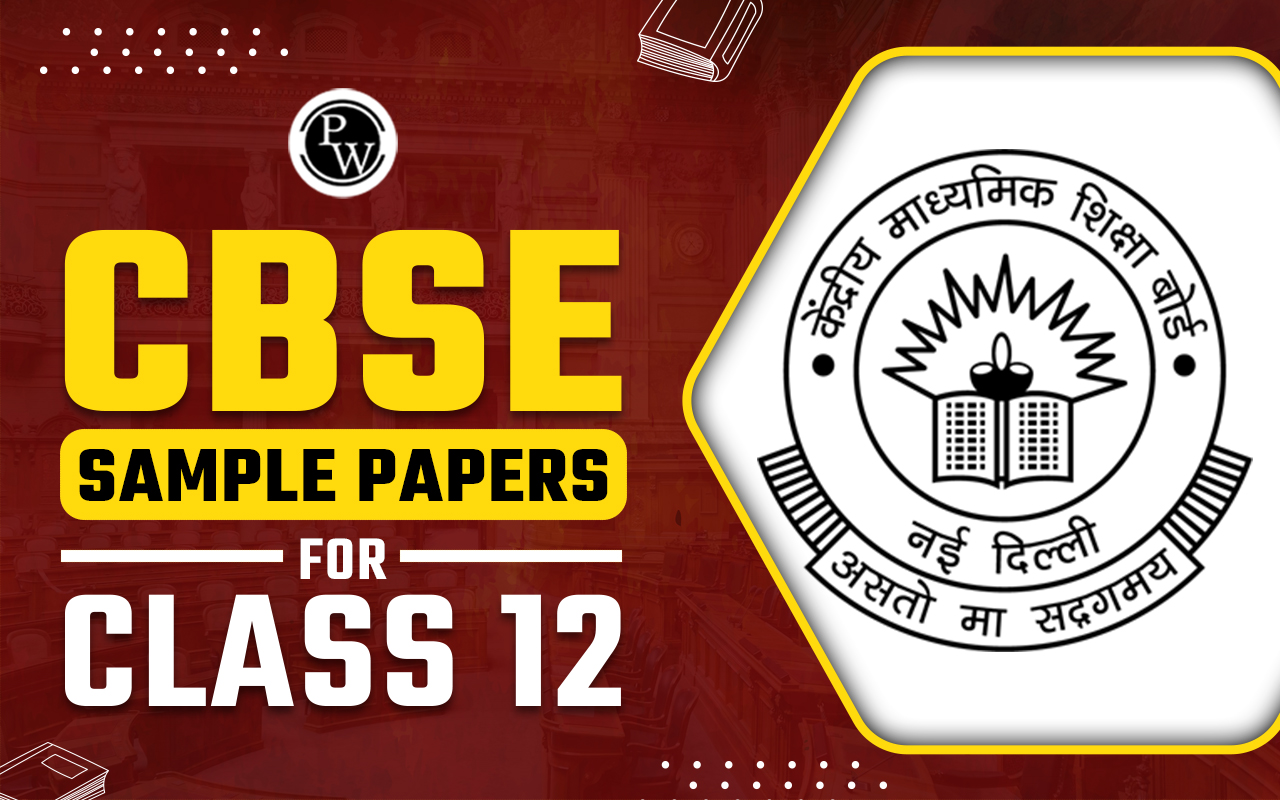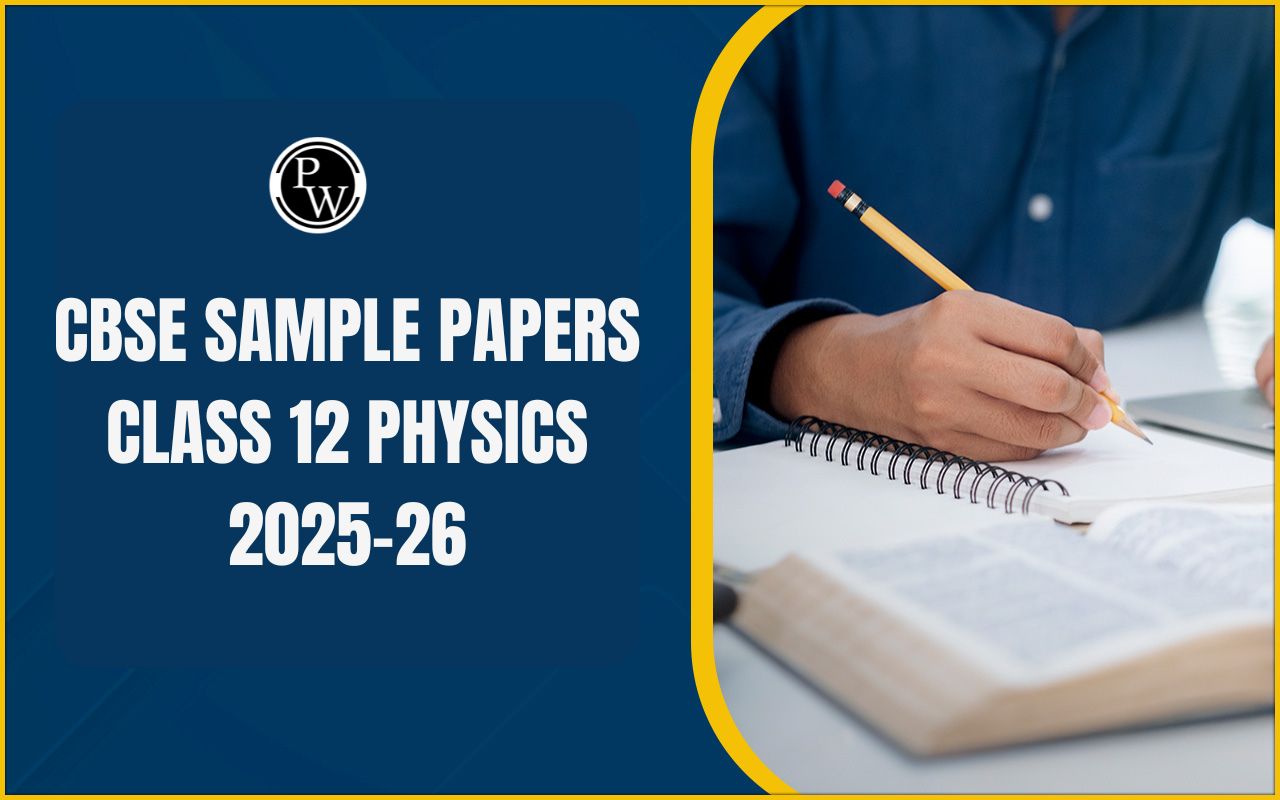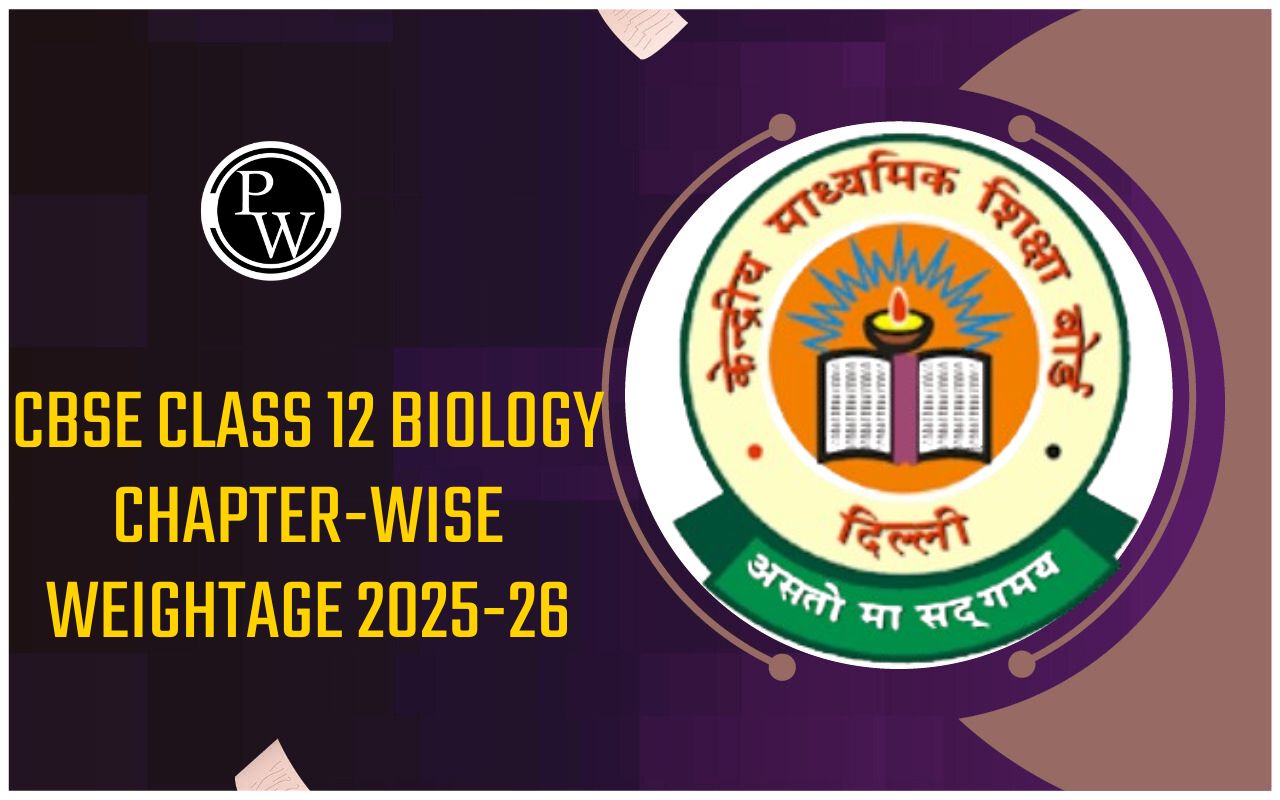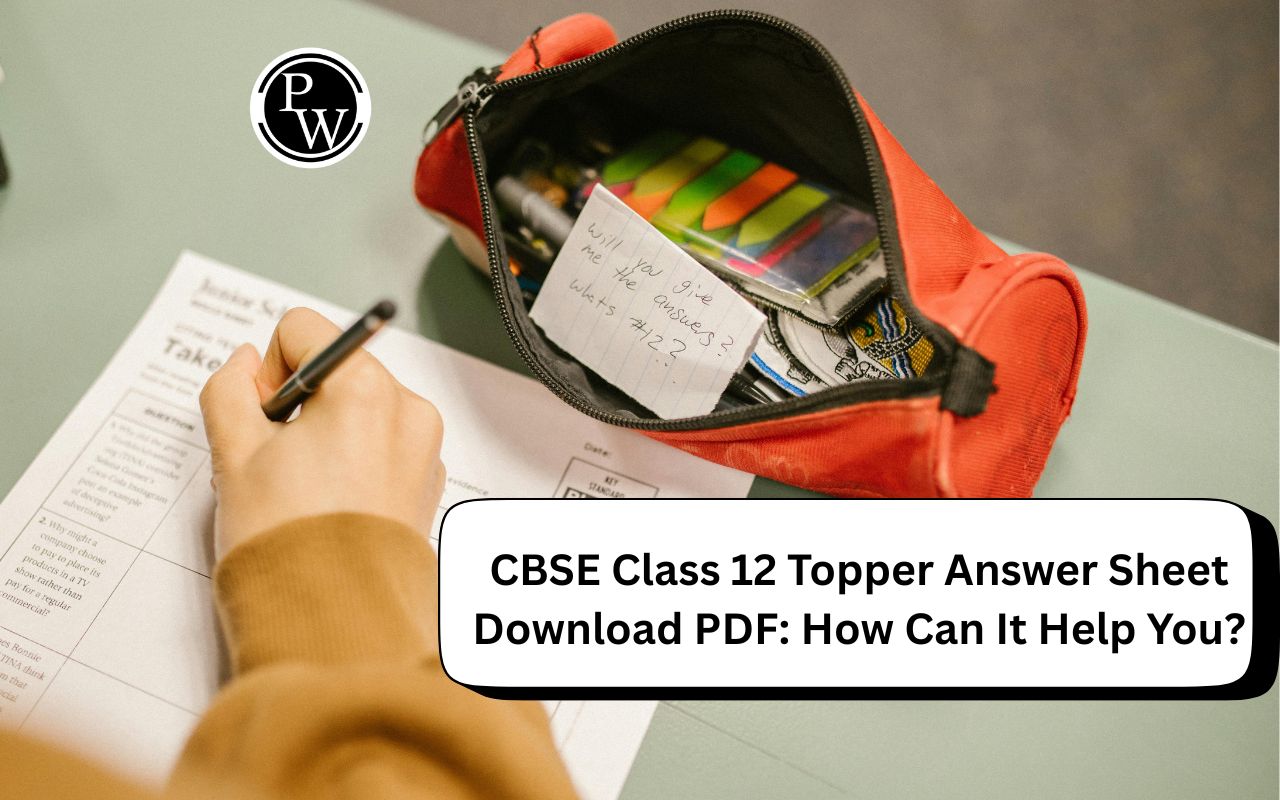
CBSE Class 12 Chemistry Syllabus 2025-26: CBSE Class 12 Chemistry Syllabus 2025-26 is accessible for students to prepare for this academic year. Chemistry is one of the main divisions of Science that deals with the qualities, structure, and components of matter or substance and its interactions with other forms of matter.
Students need to study the CBSE Class 12 Chemistry Syllabus before commencing their academic year. It would provide students with an understanding of the chapters and units of the CBSE Class 12. The Board undertakes investigations and research before altering or prescribing the Syllabus for Class 12 Chemistry. Below, we have posted the CBSE Class 12 Chemistry Syllabus PDF for free downloading.CBSE Class 12 Chemistry Syllabus 2025-26 Overview
When reading any chapter, it is important that students gain a sense of comprehension. Every major topic is covered in class 12 chemistry syllabus.CBSE Class 12 Chemistry Syllabus 2025-26
Students may get the recently published CBSE Class 12 Syllabus PDF from the link below. Going through the syllabus will enable students to know the subjects they are going to learn in Chemistry over the academic year. Below is the CBSE Class 12 Chemistry Syllabus, along with the grading structure and the length of the Chemistry examination.|
CBSE Class 12 Chemistry Syllabus 2025-26 |
||
| S.No. | Chapter Name | Marks |
| Inorganic Chemistry | ||
| 1. | Solutions | 7 |
| 2. | Electrochemistry | 9 |
| 3. | Chemical Kinetics | 7 |
| 4. | d -and f-Block Elements | 7 |
| 5. | Coordination Compounds | 7 |
| Organic Chemistry | ||
| 6. | Haloalkanes and Haloarenes | 6 |
| 7. | Alcohols, Phenols and Ethers | 6 |
| 8. | Aldehydes, Ketones and Carboxylic Acids | 8 |
| 9. | Amines | 6 |
| 10. | Biomolecules | 7 |
| Total | 70 | |
CBSE Class 12 Chemistry Syllabus 2025-26 Chapter-wise
We have published the full CBSE Class 12 Chemistry Syllabus for the students' reference. The CBSE Class 12 Chemistry Syllabus guides students and helps them plan their studies.|
CBSE Class 12 Chemistry Syllabus 2025-26 Chapter-wise |
||
|---|---|---|
| Unit | Topic | Topics |
| 1 | Solid state | Classification Of Solids Based On Different Binding Forces- Molecular, Ionic, Covalent And Metallic Solids, Crystalline And Non-Crystalline Solids, Two Dimensional And Three Dimensional Crystal Lattice And Unit Cells, Packing Efficiency, Calculate Density Of Unit Cell, Packing Efficiency In Solid, Vacancies, Number Of Cells Per Unit In Cubic Unit Cell, etc. |
| 2 | Solution | Type of Solution, Expressing the Concentration of Solutions Formed from Solids in Liquids, Solubility of Gases in Liquids, Solid Solution, Atomic Number Property- Relative Pressure Of Vapor Pressure, Raoult’s Law. |
| 3 | Electrochemistry | Oxidation-Reduction Reactions, Specific And Molar Conductivity, Change In Conductivity Due To Change In Concentration, Conductivity In Electrolytic Solution, Kohlrausch’s Law, Galvanic Isolation And Its Laws, Dry Cell, Galvanic Cell, Relationship Between Gibb’s Free Energy And Change In EMF Of A Cell. Reaction Velocity- Average And Instantaneous, Factors Affecting Reaction Velocity- Concentration, Temperature, Catalyst, Order Of Reaction And Molecularity, Velocity Law And Specific Rate Constant, Integrated Velocity Equation And Half-Life. |
| 4 | d and f-block elements | Basic Introduction, Electronic Configuration, Characteristics And Availability Of Transition Metals, General Trend In Properties Of First Series Of Transition Metals, Metallic Properties, Oxidation State, Catalyst Properties, Preparation And Properties of K2Cr2O7 and KMnO4. Group 15 Elements- Basic Introduction, Electronic Configuration, Oxidation State, Availability, General Trend in Physical And Chemical Properties, Preparation Of Nitrogen, Properties And Applications, Preparation And Application Of Halides, etc. Group 16 Elements- Basic Introduction, Electronic Configuration, Oxidation State, Availability, General Trend in Physical & Chemical Properties, Preparation of Dioxygen, Properties & Applications, Preparation & Application of Sulphuric Acid, etc. Group 17 Elements- Basic Introduction, Electronic Configuration, Oxidation State, Availability, General Trend in Physical And Chemical Properties, Preparation Of Chlorine And Hydrochloric Acid, Properties And Applications. Group 18 Elements- Basic Introduction, Electronic Configuration, Oxidation State, Availability, General Trend in Physical And Chemical Properties, Application |
| 5 | Coordination Compounds | Introduction, Ligands, Coordination Number, Magnetic Properties Of Coordination Compound, IUPAC Nomenclature Rules Of Coordination Compounds, Bond, Werner Theory, VBT And CFT Structure And Stereoscopic Isomerism, Importance Of Co-Ordination Compound In Extraction And Qualitative Analysis Of Metals And In Biological System |
| 6 | Haloalkanes and Haloarenes | Haloalkane- Nomenclature, Nature of C-X Bond, Physical & Chemical Properties, Mechanism of Substitution Reactions, Polar Rotation Haloarene- Nature of C-X Bond, Substitution Reactions, Dichloromethane, Trichloromethane, Tetrachloromethane, Iodoform, Freons and DDT Usage and Effect On Environment |
| 7 | Alcohols, Phenols, and Ethers | Alcohol- Nomenclature, Method Of Preparation, Physical & Chemical Properties, Identification Of Primary, Secondary And Tertiary Alcohol, Dehydration Of Alcohol, Uses Of Methanol And Ethanol Phenol- Nomenclature, Method Of Preparation, Physical & Chemical Properties, Acidic Nature Of Phenol, Electron Substitution Reaction, Application Of Phenol Ether- Nomenclature, Method Of Preparation, Physical & Chemical Properties, Application |
| 8 | Aldehydes, Ketones, and Carboxylic Acids | Aldehyde & Ketone- Nomenclature, Nature of Carbonyl Group, Method of Preparation, Physical & Chemical Properties, Nucleophilic Addition Reactions of Aldehydes And Ketones, Aldehyde’s Alpha Hydrogen Activity, Application Carboxylic Acids- Nomenclature, Acidic Nature, Method of Preparation, Physical & Chemical Properties, Application |
| 9 | Amines (Organic Compounds containing Nitrogen) | Amines- Nomenclature, Classification, Structure, Method of Preparation, Physical & Chemical Properties, Identification of Primary, Secondary, and Tertiary Amines, and Cyanide and isocyanides. |
| 10 | Biomolecules | Carbohydrate- Classification (Aldose And Ketose), Monosaccharide (Glucose And Fructose), D-L Configuration, Oligosaccharide (Sucrose, Lactose, Maltose), Polysaccharide (Starch, Cellulose, Glycogen), Importance Protein- Primary Introduction Of Amino Acid, Peptide Bond, Polypeptide, Protein, Primary, Secondary, Tertiary And Quaternary Structure Of Protein, Deformation Of Proteins, Enzymes, Hormones Vitamin- Classification And Function Nucleic acid- DNA and RNA |
CBSE Class 12 Chemistry Evaluation Scheme for Examination
Class 12th Chemistry Practical Evaluation Scheme: The following is a breakdown of the marks for practical, project work, class records, and viva. The Practical is worth 30 points in total, which is added to the theoretical marks to make the exam worth 100 points.| CBSE Class 12 Chemistry Evaluation Scheme for Examination | |
| Evaluation Scheme for Examination | Marks |
| Volumetric Analysis | 08 |
| Salt Analysis | 08 |
| Content-Based Experiment | 06 |
| Project Work | 04 |
| Class record and viva | 04 |
| Total Marks | 30 |
CBSE Class 12 Chemistry Syllabus 2025-26 for Practical
Below is the CBSE Class 12 Chemistry Syllabus for Practical. Candidates are advised to check the syllabus of the practicals carefully to score better in the examinations.|
CBSE Class 12 Chemistry Syllabus for Practical |
||
| S.No. | Practicals | |
| A. | Surface Chemisry | (a) Preparation of one lyophilic and one lyophobic sol Lyophilic sol - starch, egg albumin and gum Lyophobic sol - aluminium hydroxide, ferric hydroxide, arsenous sulphide. (b) Dialysis of sol-prepared in (a) above. (c) Study of the role of emulsifying agents in stabilizing the emulsion of different oils. |
| B. | Chemical Kinetics | (a) Effect of concentration and temperature on the rate of reaction between Sodium Thiosulphate and Hydrochloric acid. (b) Study of reaction rates of any one of the following: (i) Reaction of Iodide ion with Hydrogen Peroxide at room temperature using different concentrations of Iodide ions. (ii) Reaction between Potassium Iodate, (KIO3) and Sodium Sulphite: (Na2SO3) using starch solution as an indicator (clock reaction). |
| C. | Thermochemistry | Any one of the following experiments (a) Enthalpy of dissolution of Copper Sulphate or Potassium Nitrate. (b) Enthalpy of neutralization of strong acid (HCl) and strong base (NaOH). (c) Determination of enthalpy change during interaction (Hydrogen bond formation) between Acetone and Chloroform. |
| D. | Electrochemistry | Variation of cell potential in Zn/Zn2+|| Cu2+/Cu with change in concentration of electrolytes (CuSO4 or ZnSO4) at room temperature. |
| E. | Chromatography | (a) Separation of pigments from extracts of leaves and flowers by paper chromatography and determination of Rf values. (b) Separation of constituents present in an inorganic mixture containing two cations only (constituents having large differences in Rf values to be provided). |
| F. | Preparation of Inorganic Compounds | Preparation of double salt of Ferrous Ammonium Sulphate or Potash Alum. Preparation of Potassium Ferric Oxalate. |
| G. | Preparation of Organic Compounds | Preparation of any one of the following compounds i) Acetanilide ii) Di -benzalAcetone iii) p-Nitroacetanilide iv) Aniline yellow or 2 - Naphthol Aniline dye. |
| H. | Tests for the functional groups present in organic compounds: | Unsaturation, alcoholic, phenolic, aldehydic, ketonic, carboxylic and amino (Primary)groups. |
| I. | Characteristic tests of carbohydrates, fats and proteins in pure samples and their detection in given foodstuffs. | |
| J. | Determination of concentration/ molarity of KMnO4 solution by titrating it against a standard solution of | (a) Oxalic acid, (b) Ferrous Ammonium Sulphate (Students will be required to prepare standard solutions by weighing themselves). |
| K. | Qualitative analysis | Determination of one anion and one cation in a given salt: Cation: Pb2+, Cu2+ As3+, Aℓ3+ , Fe3+, Mn2+, Zn2+, Ni2+, Ca2+, Sr2+, Ba2+, Mg2+, NH4+ Anions: (CO3)2- , S2- , (SO3)2-, (NO2)- , (SO4)2- , Cℓ- , Br- , I- , (PO4)3- , (C2O4)2- , CH3COO- , NO3- |
|
CBSE Class 12 Chemistry Syllabus Investigatory Project |
| Investigatory Project- Scientific investigations involving laboratory testing and collecting information from other sources. A few suggested Projects. |
|
CBSE Class 12 Chemistry Deleted Syllabus 2025-26
Certain chapters of the CBSE Class 12 Chemistry Syllabus have been eliminated by the board. The table below lists the eliminated chapters from the Chemistry curriculum.|
CBSE Class 12 Chemistry Deleted Syllabus 2025-26 |
||
| Chemistry Part 1 | ||
| Units | Page No. | Dropped Topics/Chapters |
| Unit 1: The Solid State | 1–34 | Full Chapter |
| Unit 5: Surface Chemistry | 123–148 | Full Chapter |
| Unit 6: General Principles and Processes of Isolation of Elements | 149–169 | Full Chapter |
| Unit 7: The p-Block Elements | 170–214 | Full Chapter |
| Chemistry Part 2 | ||
| Unit 15: Polymers | 433–446 | Full Chapter |
| Unit 16: Chemistry in Everyday Life | 447–463 | Full Chapter |
CBSE Class 12 Chemistry Syllabus 2025-26 PDF
The CBSE Class 12 chemistry Syllabus for the academic year 2025-26 is an important resource for students studying chemistry. This syllabus outlines the topics and concepts that students will cover throughout the academic year.Do you need help with your homework or preparing for exams?
Study without using the internet
How to complete the CBSE Class 12 Chemistry Syllabus?
The syllabus serves as a road map for each examination. Here are some pointers to help you finish the course and pass the examination with flying colours.
- Thoroughly read the full curriculum.
- Sort the units according to the months.
- Schedule revision days, such as the second, fifth, and ninth days.
- After finishing any unit, do a few model papers.
CBSE Class 12 Chemistry Syllabus FAQs
Is the CBSE class 12 syllabus 2025-26 released?
Will I pass if I fail in chemistry class 12?
Is class 12th chemistry difficult?
Is it easy to score 90 in Chemistry class 12?



